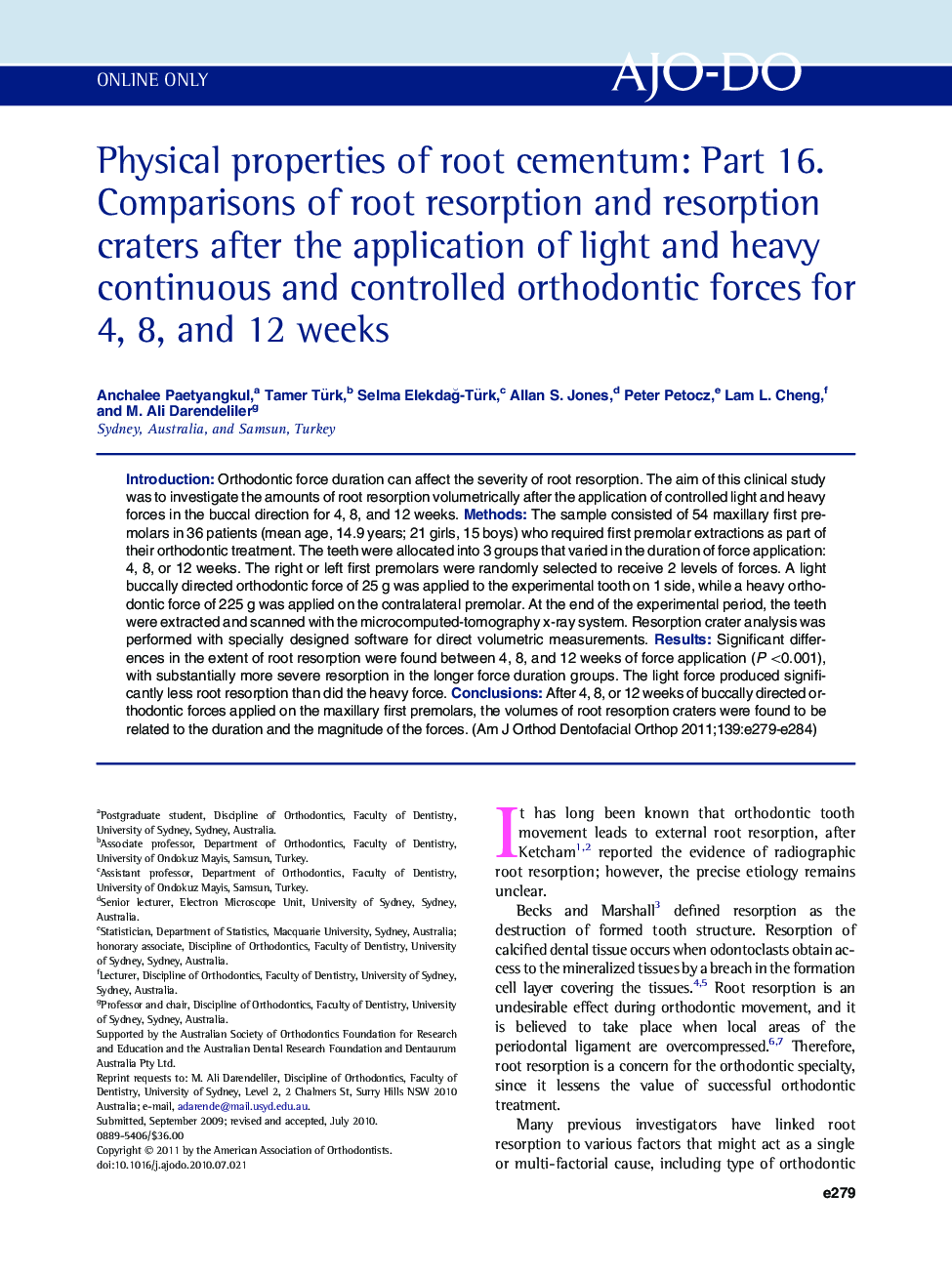| Article ID | Journal | Published Year | Pages | File Type |
|---|---|---|---|---|
| 3117118 | American Journal of Orthodontics and Dentofacial Orthopedics | 2011 | 6 Pages |
IntroductionOrthodontic force duration can affect the severity of root resorption. The aim of this clinical study was to investigate the amounts of root resorption volumetrically after the application of controlled light and heavy forces in the buccal direction for 4, 8, and 12 weeks.MethodsThe sample consisted of 54 maxillary first premolars in 36 patients (mean age, 14.9 years; 21 girls, 15 boys) who required first premolar extractions as part of their orthodontic treatment. The teeth were allocated into 3 groups that varied in the duration of force application: 4, 8, or 12 weeks. The right or left first premolars were randomly selected to receive 2 levels of forces. A light buccally directed orthodontic force of 25 g was applied to the experimental tooth on 1 side, while a heavy orthodontic force of 225 g was applied on the contralateral premolar. At the end of the experimental period, the teeth were extracted and scanned with the microcomputed-tomography x-ray system. Resorption crater analysis was performed with specially designed software for direct volumetric measurements.ResultsSignificant differences in the extent of root resorption were found between 4, 8, and 12 weeks of force application (P <0.001), with substantially more severe resorption in the longer force duration groups. The light force produced significantly less root resorption than did the heavy force.ConclusionsAfter 4, 8, or 12 weeks of buccally directed orthodontic forces applied on the maxillary first premolars, the volumes of root resorption craters were found to be related to the duration and the magnitude of the forces.
